We’ve compiled this guide to the best diving in Thailand. Whether you’re an amateur snorkeller or fully qualified PADI instructor, Thailand’s diving is out of this world.
Thailand is a land of extremes — nothing is done by halves here.
But one area in which it delivers time and time again is its incredible diving sites: stunning marine life is hidden below crystalline waters, complete with intricate landforms and masses of coral reef to navigate.
It’s no wonder that divers from all over the world head to Siamese shores every year to experience some of the beauty on offer.
There are a huge number of different sites to dive in, in both the Gulf of Thailand and the Andaman Sea, with plenty to occupy both beginner and experienced divers.
Visibility is excellent in Thailand, even up to 30 metres at some points, while the waters are warm and generally inviting. November to March is usually the most popular period of the year for diving, but many centres stay open year round.
It would be a fool’s errand to list all the very many dive sites on offer, so we’ve come up with a list of the best.
Get ready to expand that bucket list…
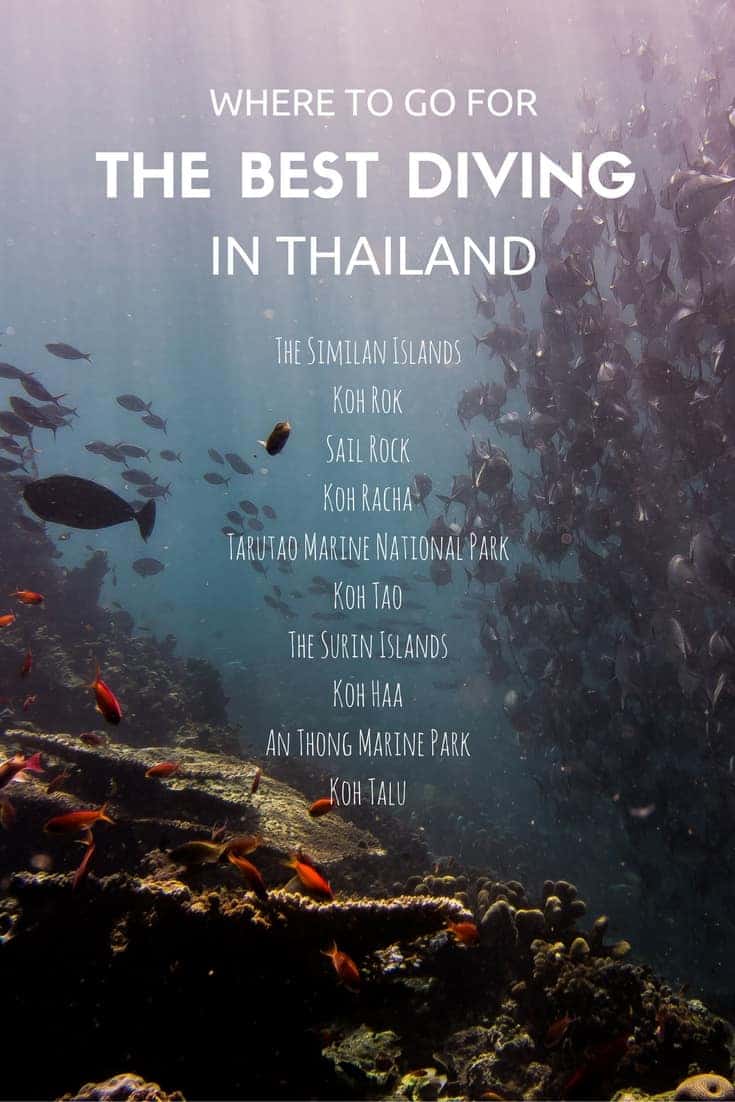
The Similan Islands
Phang Nga Province
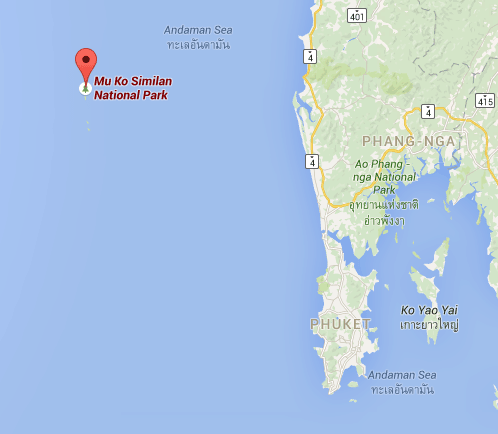
Located far out into the Andaman Sea off the coast of Phang Nga, the Similan Islands is probably Thailand’s most famous diving spot, and one of the best in the world.
Composed of 9 islands, the visibility here is excellent and the variety of marine life quite exceptional. As well as coral, divers have spotted manta ray, leopard sharks, octopus, eels, reef sharks, turtles, barracuda and more. There are a huge number of sites here to explore, many of which boast incredible rock formations to swim through, deep caves, huge boulders and cliffs.
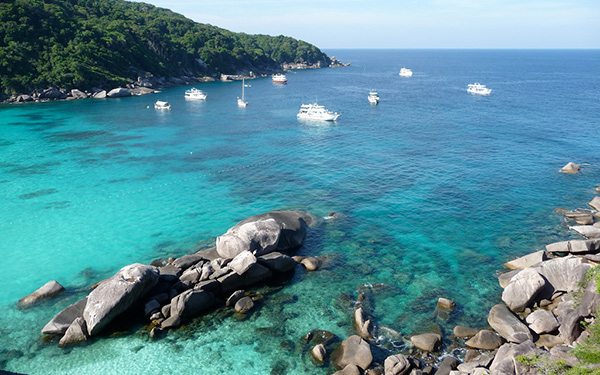
By Fred von Lohmann (Creative Commons)
The Similans are incredibly popular and it’s argued that the diving has caused some deterioration in some parts. Koh Tachai, to the north of the island group, closed indefinitely earlier this year because of this. Three of the Similans are also closed for turtle hatching and reef conservation.
You can’t stay on the Similans, and they’re generally accessed by multi-day liveaboards from Phuket and Khao Lak, with the latter often offering day trips too. The islands are closed during rainy season.
Koh Rok
Krabi Province
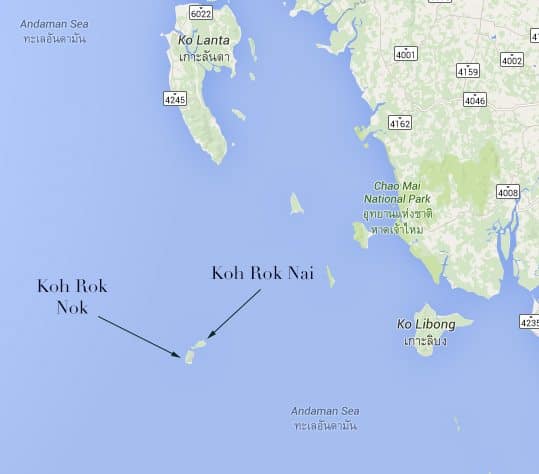
Koh Rok Nok and Koh Rok Nai are two small, beautiful islands to the south of Koh Lanta in Krabi province. Both boast incredible white sand beaches and cerulean waters, with plenty of colourful soft and hard coral to explore — Koh Rok Nok is a particular favourite among the diving community.
Marine animals are equally plentiful here, with anemones and angelfish particularly abundant. There have been sightings of sea turtles and black-tip sharks by some eagle-eyed observers. Visibility is excellent.
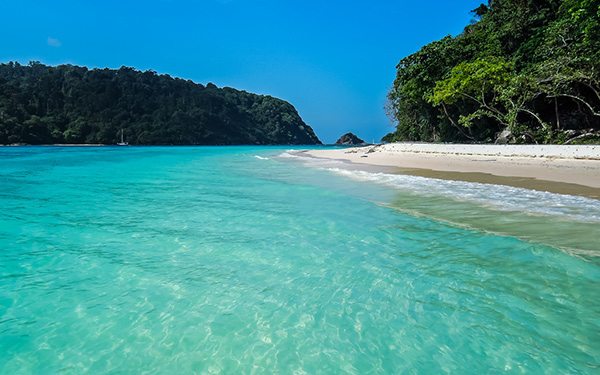
By dronpicr (Creative Commons)
You can camp overnight on Koh Rok, but most people opt to come for a day trip from Koh Lanta. You will need to book onto a tour or hire a boat yourself.
Sail Rock
Surat Thani Province
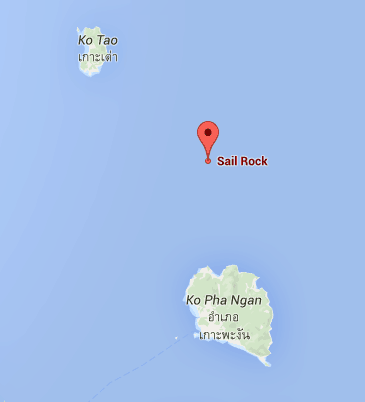
Just north of Koh Phangan is the famous Sail Rock, generally considered the best dive spot in the Gulf of Thailand. Why is it so popular? The incredible schools of fish that swarm the site — and it’s your best chance to spot a whale shark in Thailand.
The site itself starts above sea level, descending 35 metres below surface. The Chimney offers an incredible vertical swimthrough experience from 6 metres down to 18.
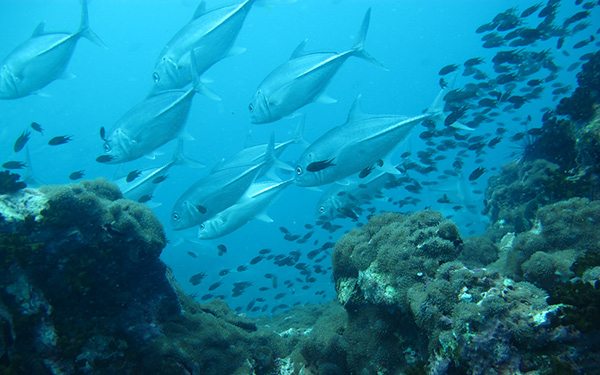
By David Rubin (Creative Commons)
Marine life you’re likely to spot here include moray eels, angelfish, barracuda, mackerel, grouper, snapper and many more.
Access is generally arranged via tour from Koh Phangan or Koh Tao.
Koh Racha
Phuket Province
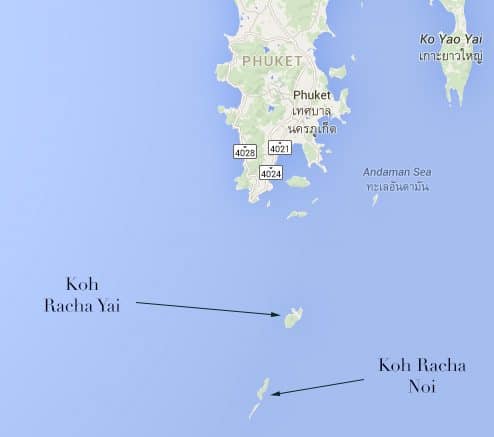
Koh Racha is another pair of islands that are famous for their incredible diving opportunities, and are often considered the best place in Phuket to do so.
While Racha Yai is the more popular site, thanks to its suitability for less experienced divers, Racha Noi is arguably the more rewarding dive — you’ll need to navigate a much rockier landscape, complete with granite boulders and a strong current. Some people have spotted manta rays and whale sharks here.
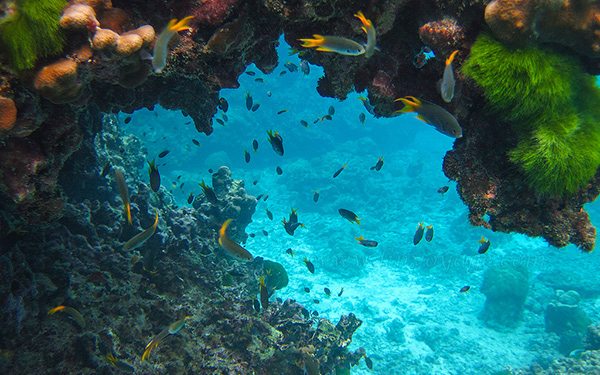
By Phuket@photographer.net (Creative Commons)
Racha Yai has some beautiful hard and soft coral to explore and even some wrecks in depths up to around 20 metres.
Koh Racha can be reached from Phuket, and there is some accommodation on Racha Yai.
Tarutao Marine National Park
Satun Province
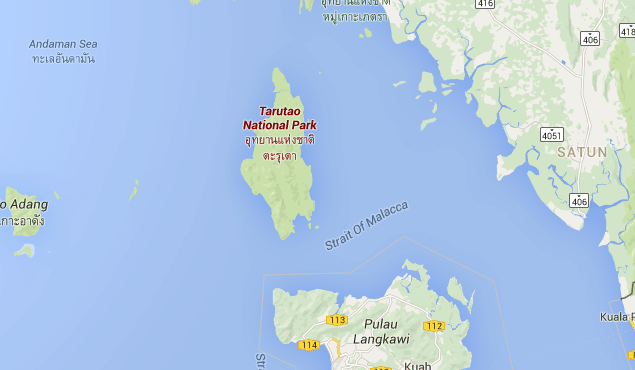
Almost at the Malaysian border is the serene and barely touched paradise of Koh Tarutao. The marine national park covers 51 islands in the vicinity and almost 1,500 square kilometres of land and sea. Koh Lipe is the most famous — and most touristic — and most diving trips can be organised centrally from here.
The diving in Tarutao national park offers some of the best visibility in the entirety of Thailand, and there’s some incredible marine life to be spotted too.
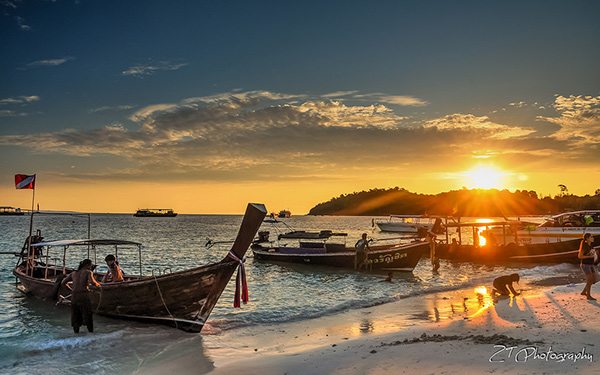
By ZakiTahir (Creative Commons)
Coral reefs are mostly intact, while sharks and manta rays are often spotted. Hawksbill turtles, octopus, stingrays and giant puffer fish are also in situ. Most favoured sites include Stonehenge and 8 Mile Rock — both home to impressive pinnacles.
Koh Tao
Surat Thani Province
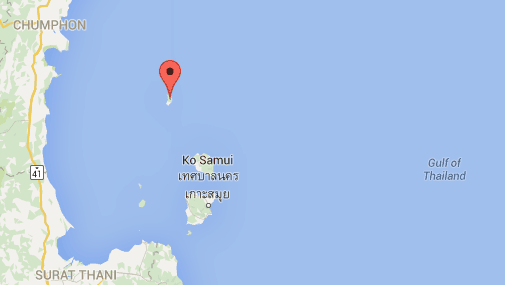
Koh Tao is probably Thailand’s most famous and popular island for diving, attracting backpackers and travellers to its many dive centres throughout the year. With over 20 such centres, it’s no surprise that the island is such a big hit with beginners.
With so many sites scattered around the island, there’s a huge variety of marine life to spot, including stingrays, turtles and sharks.
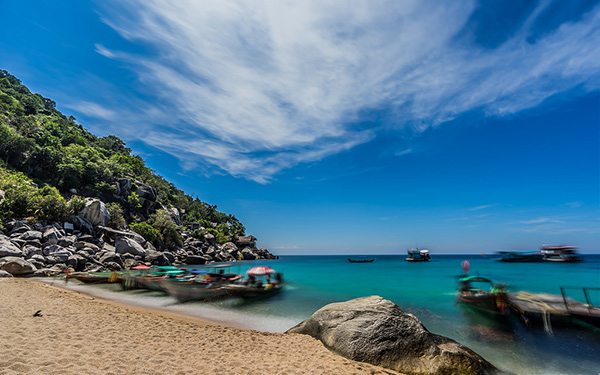
By Björn Groß (Creative Commons)
While beginner divers love Koh Tao, there’s also plenty for the more experienced: including sites with challenging currents, granite boulder formations, swimthroughs and big depths.
Surin Islands
Phang Nga Province
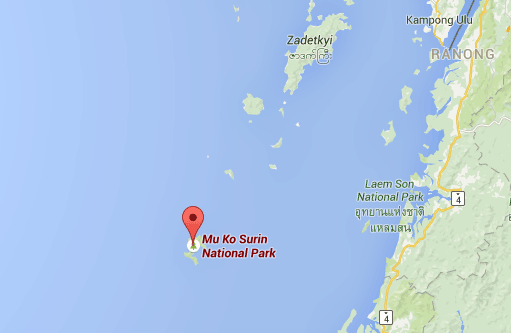
Around 100km north of the Similan Islands and almost at the Burmese border is Mu Ko Surin National Park — or the Surin Islands. This is another exquisite Andaman Sea diving experience and is home to the famous Richelieu Rock site. These islands are supposedly the best place to swim with sea turtles in the region.
Richelieu Rock — one of the top ten dive sites in the world — is practically unparalleled when it comes to the diversity of marine life it holds in its horseshoe shape. Standing alone in the Andaman Sea, the rock is carpeted in coral and continually swarmed by schools of fish, including barracuda. The lucky may spot whale sharks and manta rays.
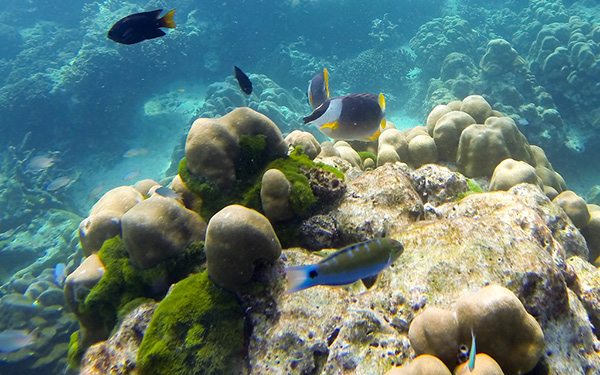
By Kent Wang (Creative Commons)
The government have closed the Surin islands to tourists in the past in a bid to stop the deterioration of the reef, and it’s generally closed annually in the rainy season. Most people access the islands via liveaboards from Khao Lak or Khura Buri.
Koh Haa
Krabi Province
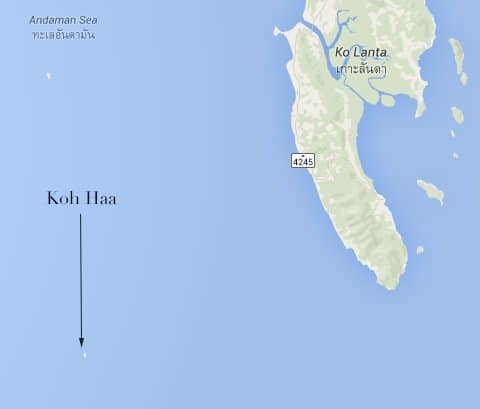
Koh Haa is a tiny group of five islands found to the west of Koh Lanta and north of Koh Rok, and is one of the most beautiful undiscovered gems of Thailand’s diving scene.
It’s ideal for both beginners and experienced divers, as well as snorkelers. While the central lagoon is more suitable for lower levels as they get to grips with the turquoise waters and abundant marine life (including ghost pipe fish), sites like the Cathedral and Chimney are composed of intricate caverns and swimthroughs surrounded by schools of fish.
Koh Haa also boasts visibility of up to 30 metres and is perfect for underwater photographers and videographers.
An Thong Marine Park
Surat Thani Province
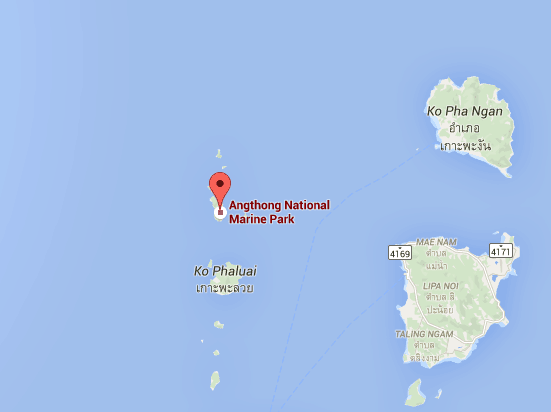
To the west of Koh Samui is the stunning An Thong Marine National Park — a group of over 40 islands that sport sublime white sand beaches and coral-filled crystal waters.
Although visibility generally only reaches to around 15 metres, you’ll still be able to see and swim with a variety of fish and marine life, as well as explore the caves and swimthroughs that are on offer here. Koh Wao and Hin Yippon are widely regarded as the most interesting sites as far as land formations go.
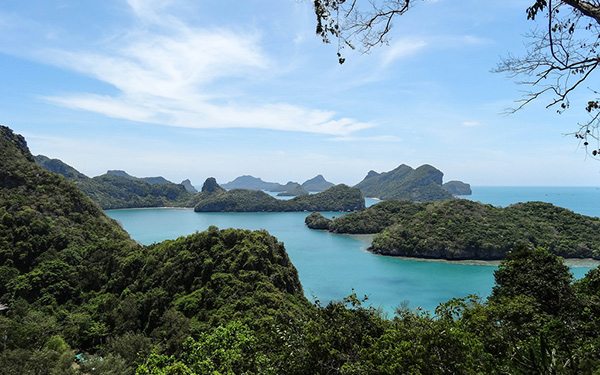
By bruno weideli (Creative Commons)
Lucky divers have seen turtles in An Thong, and some even a dwarf minke whale! Day trips can be arranged from Koh Samui.
Koh Talu
Prachuap Khiri Khan Province
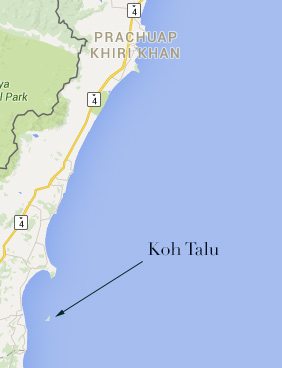
Though it doesn’t offer quite the same spectacular experiences as sites in the Andaman Sea, Koh Talu is nevertheless a great Gulf of Thailand spot for diving that’s not too far from Hua Hin and Bangkok. It’s a private island but you can arrange day trips.
It’s particularly favoured by beginner divers thanks to the shallow depths (up to 12 metres), easy currents and beautiful coral gardens to explore. Look out for manta rays! There’s also a cave in the Northeast of the island.
Where’s your favourite Thai diving spot?

